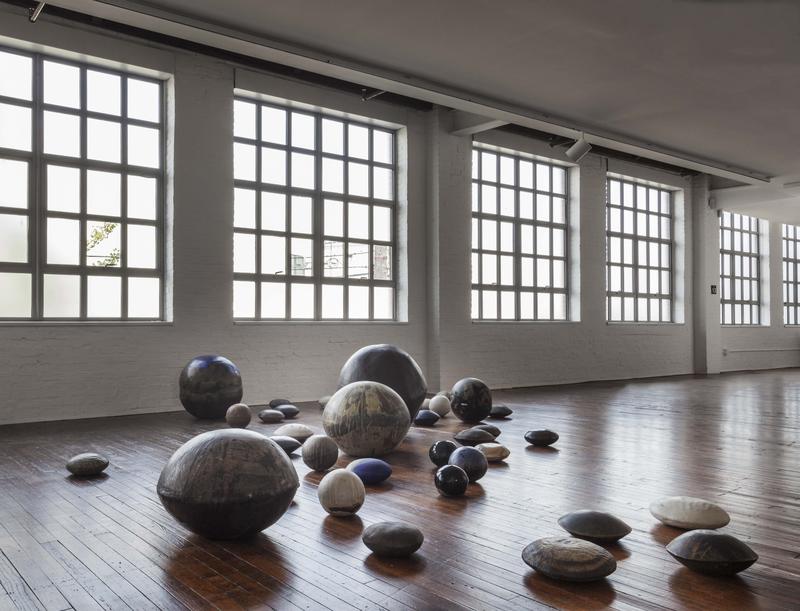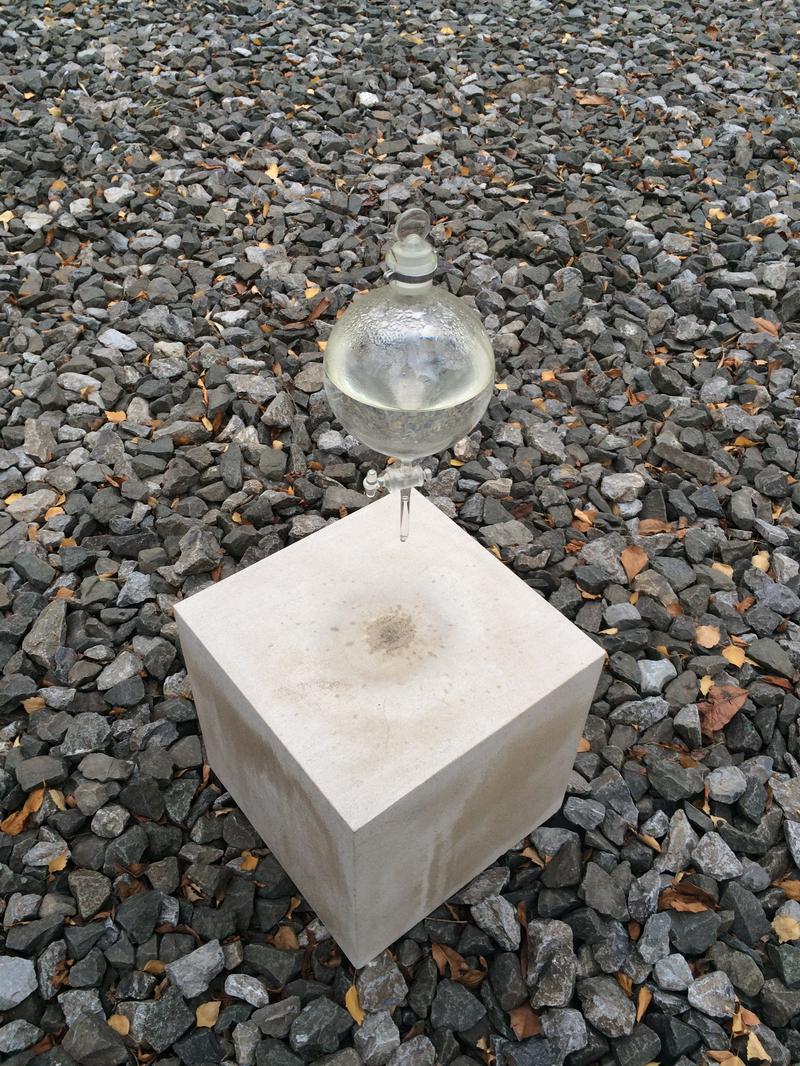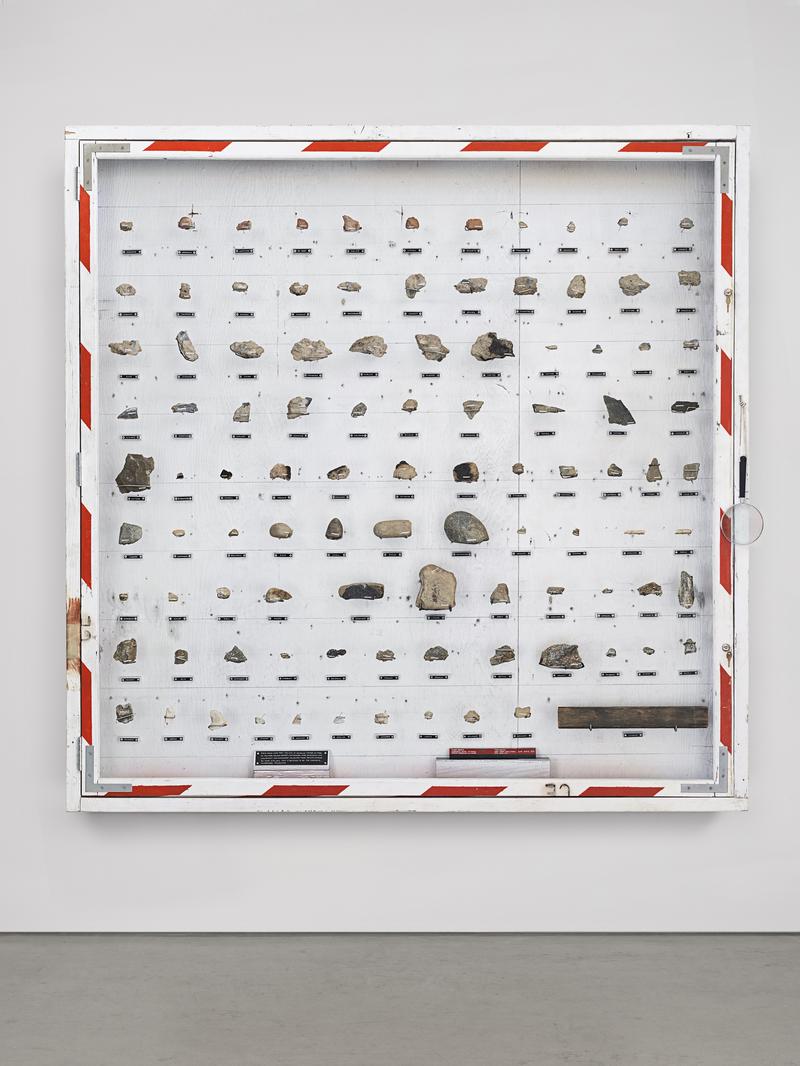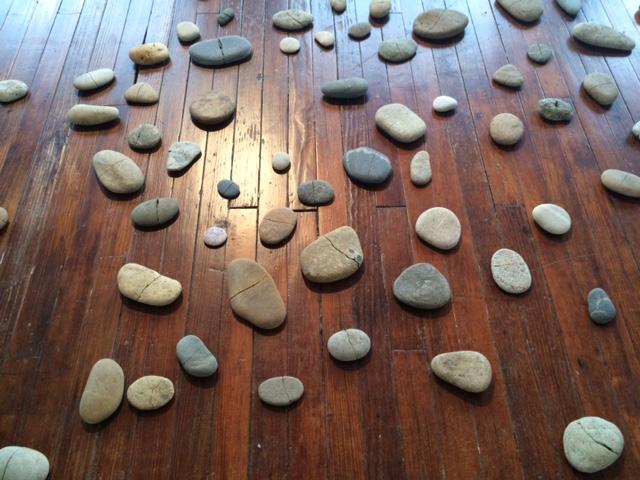
I keep two small rocks on my desk. I picked them up decades ago, one in Nova Scotia, the other out West, and they continue to hold a sentimental charge. Rocks, as the geologists like to say, never forget; they have a sort of inbuilt poetry about them, perhaps because they come with a long and unknown past.
[Click on “Listen” for Solomon’s review of the show with WNYC’s Soterios Johnson.]
I have been thinking rock-laden thoughts lately because I just saw a wonderful show, “Museum of Stones,” at the Noguchi Museum, in Long Island City. (It remains on view through January 10). The museum, of course, is a permanent repository for the art of Isamu Noguchi, the Japanese-American sculptor who died in 1988 and is probably best-known for designing a ubiquitous, bean-shaped coffee table. The current exhibition mixes Noguchi’s abstract sculptures with stone-related pieces by about 30 contemporary artists. Many of the artists are well-known — including Janine Antoni, Mel Bochner, Vija Celmins and Ugo Rondinone — but generally work in mediums other than stone.
The show, which was organized by Dakin Hart, a curator at the Noguchi museum, is appealingly understated. It doesn’t make heavy claims about Noguchi’s legacy. It’s not trying to say he spawned a generation of sculptors. In fact, much of the work of the current generation seems to go against his legacy. Noguchi was a sculptor in the heroic tradition who believed that rock was a living force, as alive as any tree or plant. He wanted you to see even his most glossy and polished sculptures as inseparable from their earthy origins.
But artists today are more likely to use rocks ironically and not get all rhapsodic about them. Both Jimmie Durham and Tom Sachs are represented in the show by pieces that mimic the look of junior-high science fair projects and pretend to classify lab specimens. Sachs’ “Mars Rocks” (2012) consists of a plywood display case lined with tidy rows of 100-plus samples of supposed material from Mars. It comes with a removable magnifying glass, in case you feel like inspecting the work and satirizing a scientist inclined to over-categorize.
The stronger pieces in the show tend to be elegiac, a lament for a globally-warmed, politically frozen planet. John Perreault, a critic and artist who died in September, contributes an affecting installation called “Mended Stones” — a floor-bound assembly of 81 smallish rocks that have cracks running through them. He made the piece by collecting some rocks, breaking them, and then gluing them back together. The installation seems to be saying that rocks are no longer a symbol of time and permanence. Rather, we broke them, we broke the earth, and this is a good time to think about repairing it.



